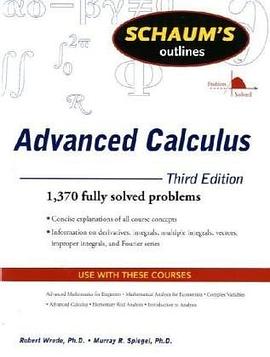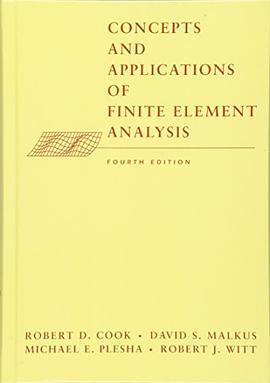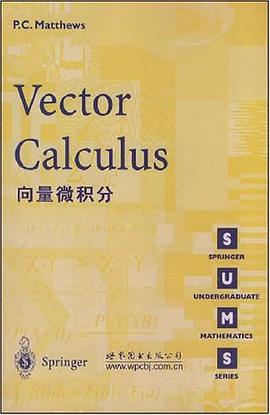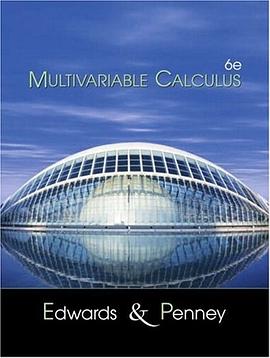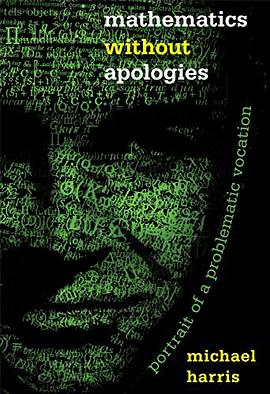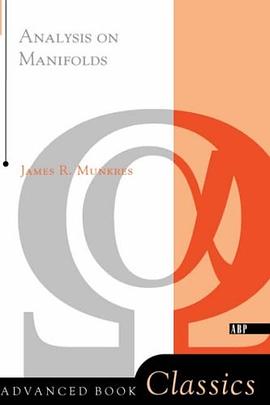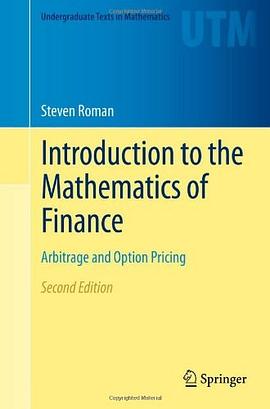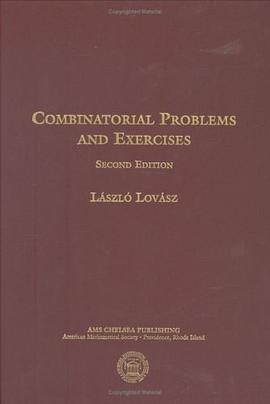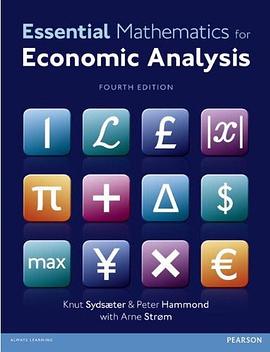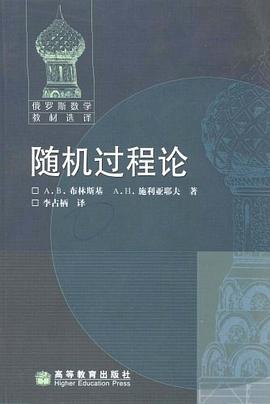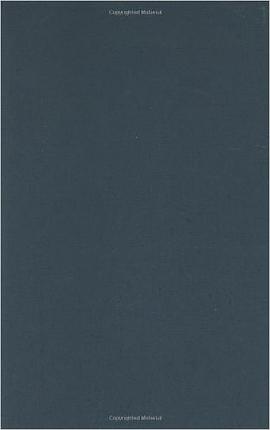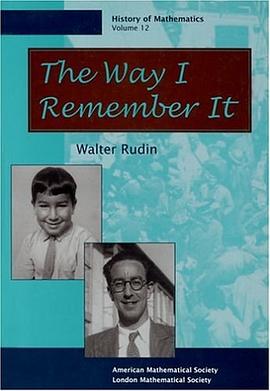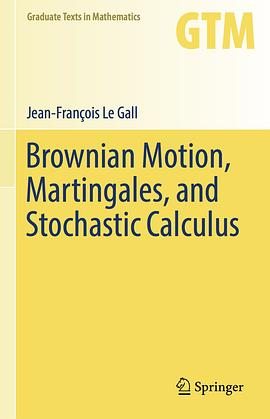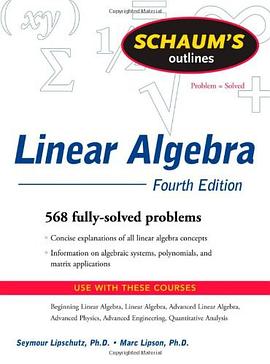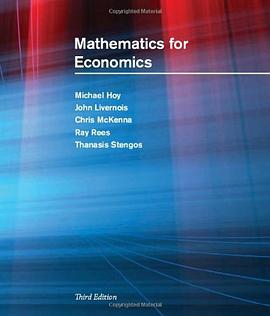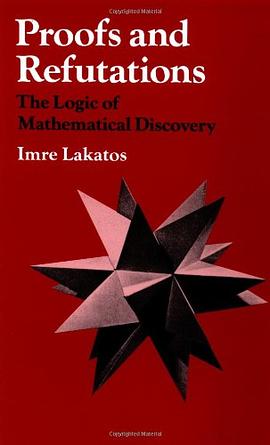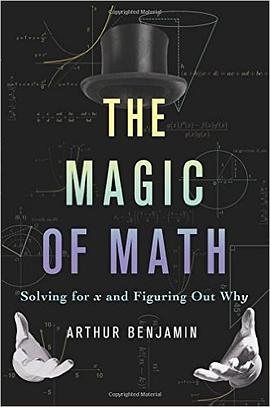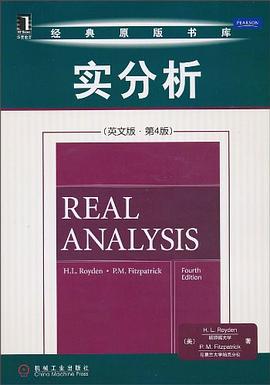

具体描述
《实分析(英文版·第4版)》是实分析课程的优秀教材,被国外众多著名大学(如斯坦福大学、哈佛大学等)采用。全书分为三部分:第一部分为实变函数论.介绍一元实变函数的勒贝格测度和勒贝格积分:第二部分为抽象空间。介绍拓扑空间、度量空间、巴拿赫空间和希尔伯特空间;第三部分为一般测度与积分理论。介绍一般度量空间上的积分.以及拓扑、代数和动态结构的一般理论。书中不仅包含数学定理和定义,而且还提出了富有启发性的问题,以便读者更深入地理解书中内容。
作者简介
目录信息
Preface iii
Lebesgue Integration for Functions of Single Real Variable
Preliminaries on Sets, Mappings, and Relations
UnionsandIntersectionsofSets
Equivalence Relations, the Axiom of Choice, and Zorn’s Lemma .
The Real Numbers: Sets, Sequences, and Functions
1.1 The Field, Positivity, and Completeness Axioms 7
1.2 TheNaturalandRationalNumbers 11
1.3 CountableandUncountableSets . 13
1.4 Open Sets, Closed Sets, and Borel Sets of Real Numbers 16
1.5 SequencesofRealNumbers . 20
1.6 Continuous Real-Valued Functions of a Real Variable . 25
Lebesgue Measure 29
2.1 Introduction . 29
2.2 LebesgueOuterMeasure 31
2.3 The σ-AlgebraofLebesgueMeasurableSets . 34
2.4 Outer and Inner Approximation of Lebesgue Measurable Sets 40
2.5 Countable Additivity, Continuity, and the Borel-Cantelli Lemma . 43
2.6 NonmeasurableSets 47
.2.7 The Cantor Set and the Cantor-Lebesgue Function 49
Lebesgue Measurable Functions 54
3.1 Sums,Products,andCompositions 54
3.2 Sequential Pointwise Limits and Simple Approximation 60
3.3 Littlewood’s Three Principles, Egoroff’s Theorem, and Lusin’s Theorem 64
Lebesgue Integration 68
4.1 TheRiemannIntegral 68
4.2 The Lebesgue Integral of a Bounded Measurable Function over a Set of
FiniteMeasure 71
4.3 The Lebesgue Integral of a Measurable Nonnegative Function 79
4.4 TheGeneralLebesgueIntegral 85
4.5 Countable Additivity and Continuity of Integration 90
4.6 Uniform Integrability: The Vitali Convergence Theorem 92
Lebesgue Integration: Further Topics 97
5.1 Uniform Integrability and Tightness: A General Vitali Convergence Theorem 97
5.2 ConvergenceinMeasure 99
5.3 Characterizations of Riemann and Lebesgue Integrability 102
Differentiation and Integration 107
6.1 ContinuityofMonotoneFunctions 108
6.2 Differentiability of Monotone Functions: Lebesgue’s Theorem 109
6.3 Functions of Bounded Variation: Jordan’s Theorem 116
6.4 AbsolutelyContinuousFunctions . 119
6.5 Integrating Derivatives: Differentiating Indefinite Integrals . 124
6.6 ConvexFunctions . 130
7The Lp Spaces: Completeness and Approximation 135
7.1 NormedLinearSpaces . 135
7.2 The Inequalities of Young, H older, and Minkowski 139¨
7.3 Lp IsComplete:TheRiesz-FischerTheorem 144
7.4 ApproximationandSeparability 150
8The Lp Spaces: Duality and Weak Convergence 155
8.1 The Riesz Representation for the Dual of Lp, 1 155
8.2 Weak Sequential Convergence in Lp 162
8.3 WeakSequentialCompactness 171
8.4 TheMinimizationofConvexFunctionals174
II Abstract Spaces: Metric, Topological, Banach, and Hilbert Spaces 181
Metric Spaces: General Properties 183
9.1 ExamplesofMetricSpaces 183
9.2 Open Sets, Closed Sets, and Convergent Sequences 187
9.3 ContinuousMappingsBetweenMetricSpaces 190
9.4 CompleteMetricSpaces 193
9.5 CompactMetricSpaces . 197
9.6 SeparableMetricSpaces 204
10 Metric Spaces: Three Fundamental Theorems 206
10.1TheArzela-AscoliTheorem `. 206
10.2TheBaireCategoryTheorem 211
10.3TheBanachContractionPrinciple. 215
11 Topological Spaces: General Properties 222
11.1 OpenSets,ClosedSets,Bases,andSubbases. 222
11.2TheSeparationProperties 227
11.3CountabilityandSeparability 228
11.4 Continuous Mappings Between Topological Spaces 230
11.5CompactTopologicalSpaces. 233
11.6ConnectedTopologicalSpaces 237
12 Topological Spaces: Three Fundamental Theorems 239
12.1 Urysohn’s Lemma and the Tietze Extension Theorem . 239
12.2TheTychonoffProductTheorem . 244
12.3TheStone-WeierstrassTheorem 247
13 Continuous Linear Operators Between Banach Spaces 253
13.1NormedLinearSpaces . 253
13.2LinearOperators . 256
13.3 Compactness Lost: Infinite Dimensional Normed Linear Spaces 259
13.4 TheOpenMappingandClosedGraphTheorems . 263
13.5TheUniformBoundednessPrinciple 268
14 Duality for Normed Linear Spaces 271
14.1 Linear Functionals, Bounded Linear Functionals, and Weak Topologies 271
14.2TheHahn-BanachTheorem . 277
14.3 Reflexive Banach Spaces and Weak Sequential Convergence 282
14.4 LocallyConvexTopologicalVectorSpaces 286
14.5 The Separation of Convex Sets and Mazur’s Theorem . 290
14.6TheKrein-MilmanTheorem. 295
15 Compactness Regained: The Weak Topology 298
15.1 Alaoglu’sExtensionofHelley’sTheorem . 298
15.2 Reflexivity and Weak Compactness: Kakutani’s Theorem 300
15.3 Compactness and Weak Sequential Compactness: The Eberlein-ˇ
Smulian Theorem 302
15.4MetrizabilityofWeakTopologies . 305
16 Continuous Linear Operators on Hilbert Spaces 308
16.1TheInnerProductandOrthogonality 309
16.2 The Dual Space and Weak Sequential Convergence 313
16.3 Bessel’sInequalityandOrthonormalBases . 316
16.4 AdjointsandSymmetryforLinearOperators 319
16.5CompactOperators 324
16.6TheHilbert-SchmidtTheorem 326
16.7 The Riesz-Schauder Theorem: Characterization of Fredholm Operators 329
III Measure and Integration: General Theory 335
17 General Measure Spaces: Their Properties and Construction 337
17.1MeasuresandMeasurableSets 337
17.2 Signed Measures: The Hahn and Jordan Decompositions 342
17.3 The Carath′346
eodory Measure Induced by an Outer Measure
17.4TheConstructionofOuterMeasures 349
17.5 The Carath′eodory-Hahn Theorem: The Extension of a Premeasure to a
Measure 352
18 Integration Over General Measure Spaces 359
18.1MeasurableFunctions 359
18.2 Integration of Nonnegative Measurable Functions 365
18.3 Integration of General Measurable Functions 372
18.4TheRadon-NikodymTheorem 381
18.5 The Nikodym Metric Space: The Vitali–Hahn–Saks Theorem 388
19 General Lp Spaces: Completeness, Duality, and Weak Convergence 394
19.1 The Completeness of LpX,μ1 ≤≤. 394
19.2 The Riesz Representation Theorem for the Dual of LpX,μ1 ≤≤ 399
19.3 The Kantorovitch Representation Theorem for the Dual of L∞X,μ. 404
19.4 Weak Sequential Compactness in LpX,μ1 [p[ 1. 407
19.5 Weak Sequential Compactness in L1X,μ: The Dunford-Pettis Theorem 409
20 The Construction of Particular Measures 414
20.1 Product Measures: The Theorems of Fubini and Tonelli 414
20.2 Lebesgue Measure on Euclidean Space Rn 424
20.3 Cumulative Distribution Functions and Borel Measures on 437
20.4 Caratheodory Outer Measures and Hausdorff Measures on a Metric Space ′. 441
21 Measure and Topology 446
21.1LocallyCompactTopologicalSpaces 447
21.2 SeparatingSetsandExtendingFunctions452
21.3TheConstructionofRadonMeasures 454
21.4 The Representation of Positive Linear Functionals on CcX:The Riesz-
MarkovTheorem . 457
21.5 The Riesz Representation Theorem for the Dual of CX 462
21.6 RegularityPropertiesofBaireMeasures 470
22 Invariant Measures 477
22.1 Topological Groups: The General Linear Group . 477
22.2Kakutani’sFixedPointTheorem . 480
22.3 Invariant Borel Measures on Compact Groups: von Neumann’s Theorem 485
22.4 Measure Preserving Transformations and Ergodicity: The Bogoliubov-Krilov
Theorem 488
Bibliography 495
Index 497
· · · · · · (收起)
读后感
Royden这本书名气太大,但可能不是最好的教材。Folland的书现在很流行,Terence Tao在UCLA给graduate开课就是这本教材,但是……Folland的书需要一定数学基础才能看,很多细节需要补充。
评分Royden这本书名气太大,但可能不是最好的教材。Folland的书现在很流行,Terence Tao在UCLA给graduate开课就是这本教材,但是……Folland的书需要一定数学基础才能看,很多细节需要补充。
评分从2015年5月到2016年3月,这本书我断断续续看了大概6个月的时间。 刚开始看的时候,困难重重,许多地方,自己都感到挺费解的。 就这样,看到第三遍的时候,我开始做后面的习题,并且结合着A Radical Approach to Lebesgue's Theory of Integration,2ed和 real analysis, 4th ...
评分 评分用户评价
越看越觉得是好书...喜欢上美国数学教材了都...不过只学了一小部分- -
评分小开本,印刷挺好!
评分教材,要是有时间做做作业就好了,老师竟然把它作为大二非数学系教材,好恐怖,幸好我是旁听而已
评分其实这本书作为实分析的入门书还是很扎实的。
评分小开本,印刷挺好!
相关图书
本站所有内容均为互联网搜索引擎提供的公开搜索信息,本站不存储任何数据与内容,任何内容与数据均与本站无关,如有需要请联系相关搜索引擎包括但不限于百度,google,bing,sogou 等
© 2025 book.quotespace.org All Rights Reserved. 小美书屋 版权所有

